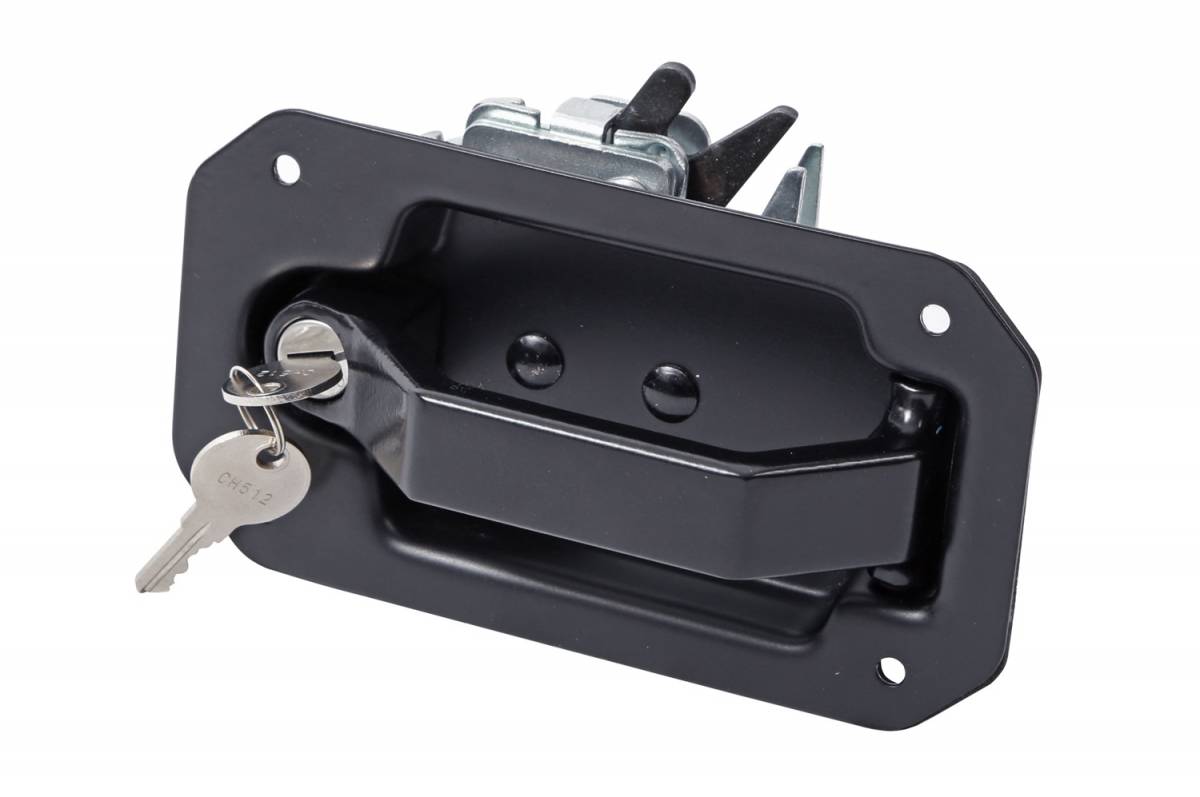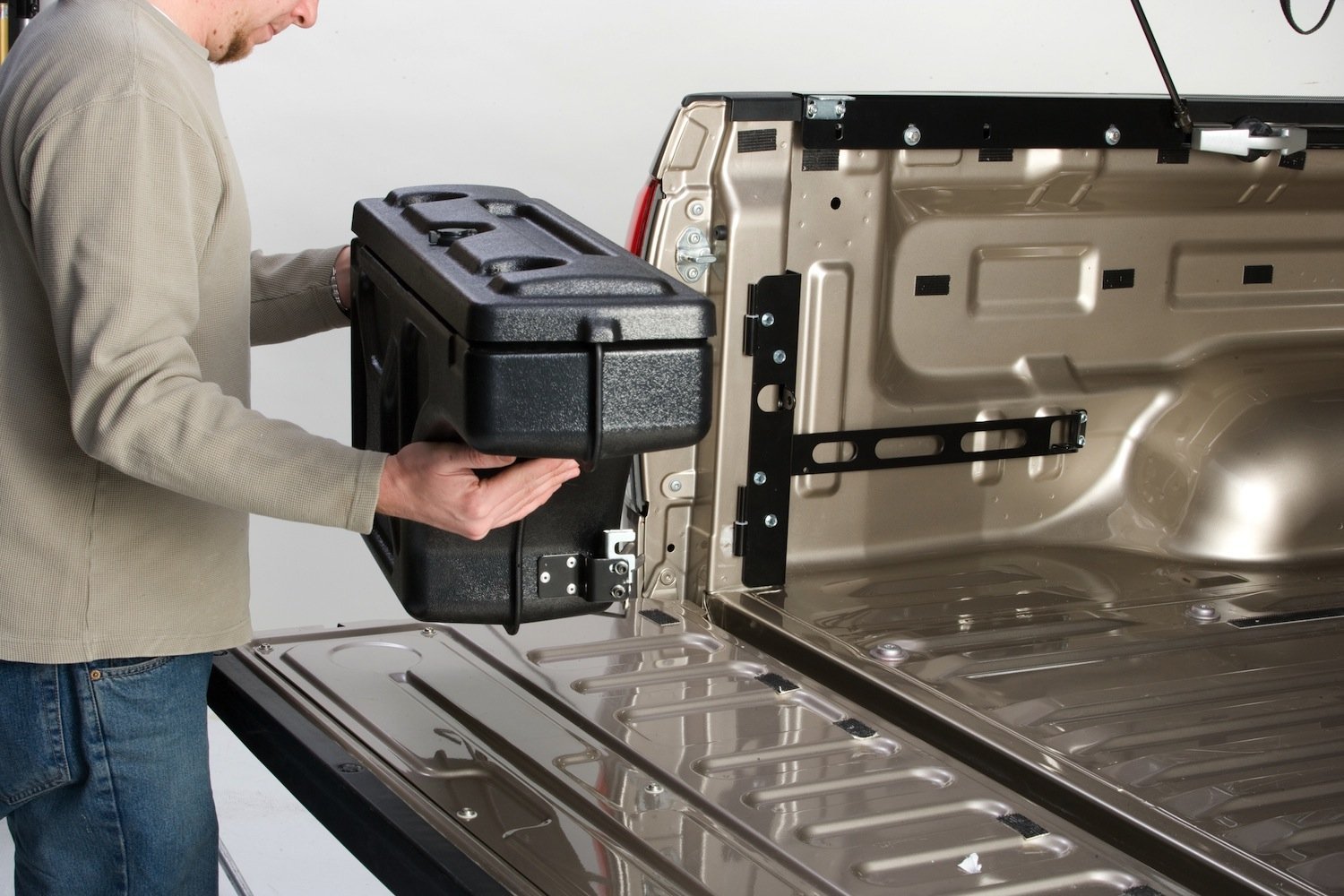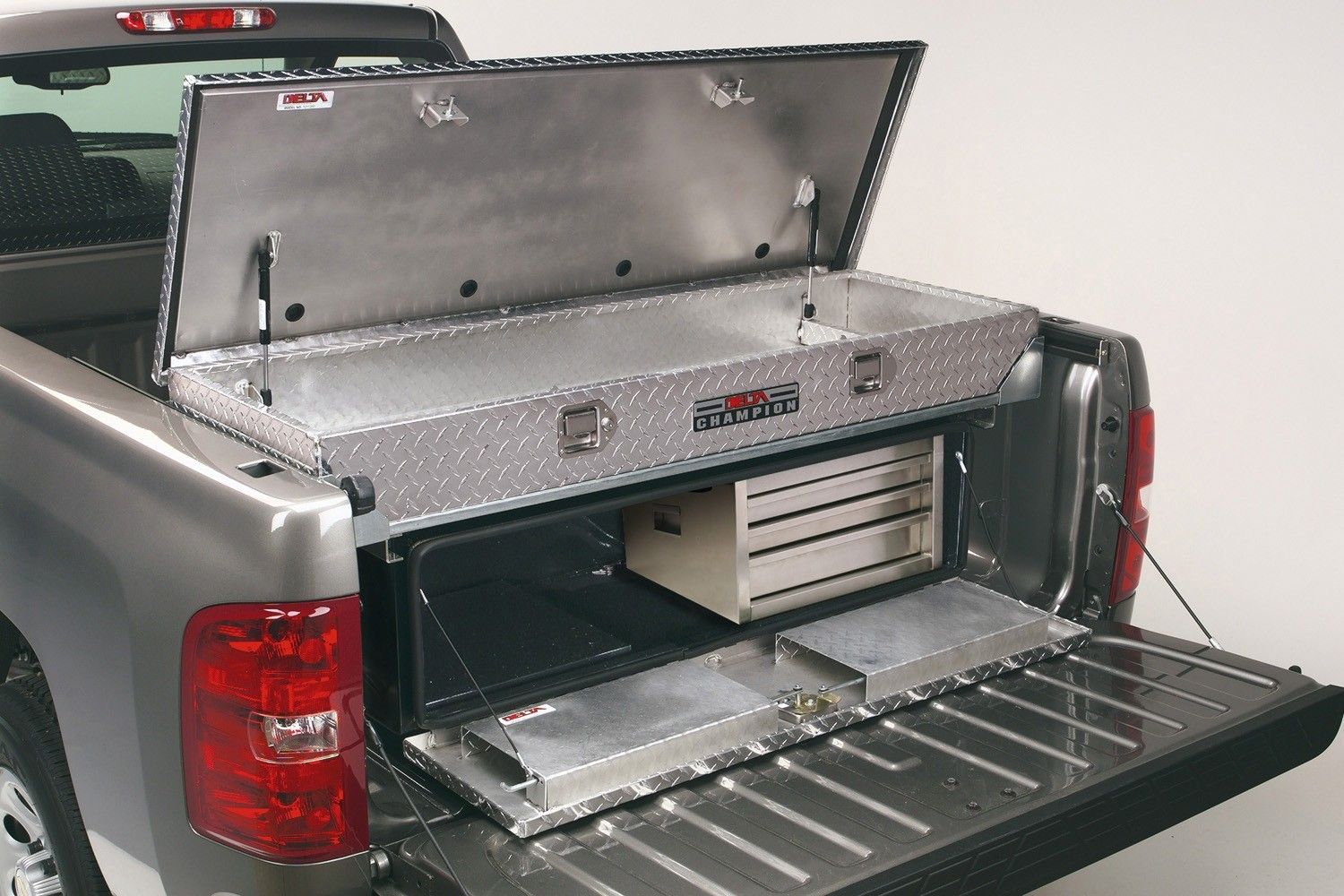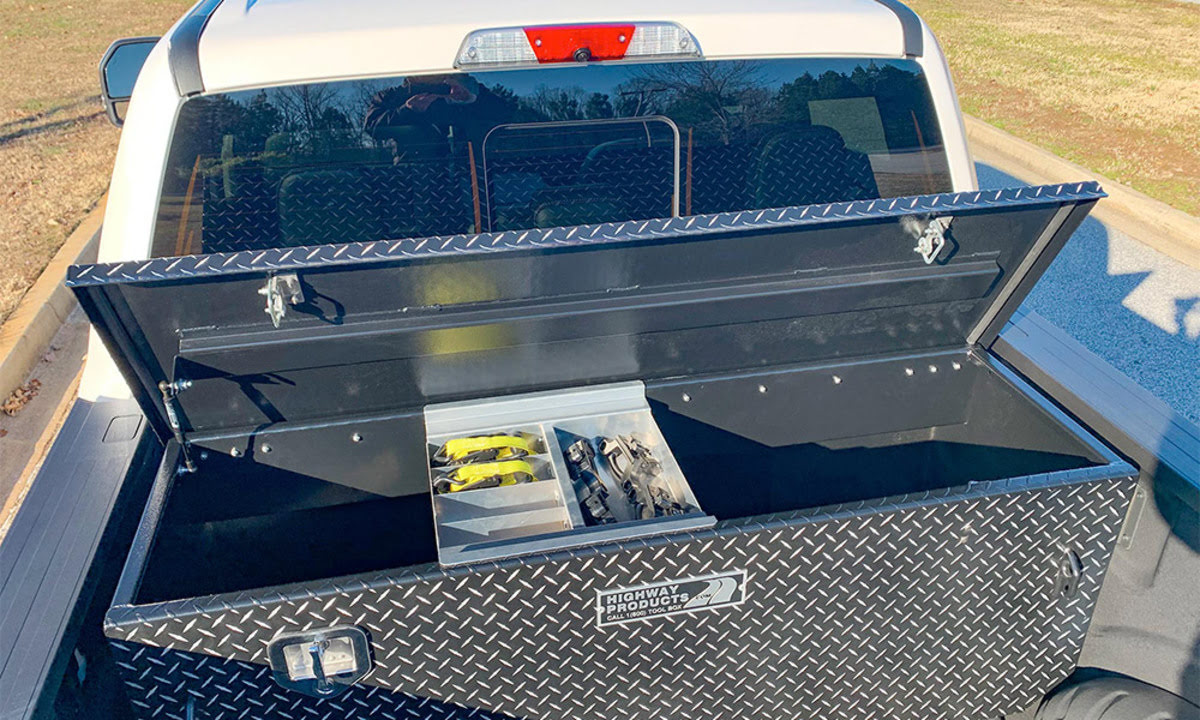

Articles
How To Secure Truck Tool Box
Modified: October 20, 2024
Learn the best practices and techniques to secure your truck tool box with our informative articles. Protect your valuable tools and equipment with our expert advice.
(Many of the links in this article redirect to a specific reviewed product. Your purchase of these products through affiliate links helps to generate commission for Storables.com, at no extra cost. Learn more)
Introduction
When it comes to owning a truck, having a truck tool box is essential. It provides a convenient and secure solution for storing and transporting essential tools and equipment. However, it’s not enough just to have a tool box on your truck; it’s equally important to ensure that it is securely locked and protected.
In this article, we will delve into the importance of securing truck tool boxes and discuss various measures you can take to keep your tools and equipment safe. We will explore the common types of truck tool boxes, the importance of choosing the right locking mechanism, and how to install the tool box securely on your truck. Additionally, we will cover additional security measures and offer maintenance tips to help keep your truck tool box secure for years to come.
So, whether you are a professional truck driver or a weekend warrior who relies on your truck for work or play, read on to discover the best practices for securing your truck tool box and protecting your valuable tools.
Key Takeaways:
- Securing your truck tool box is essential to prevent theft, protect tools from damage, and maintain organization. Choose the right locking mechanism and installation method to ensure maximum security and peace of mind.
- Implement additional security measures such as alarms, GPS tracking, and visible deterrents to further protect your tools. Regular maintenance and care will prolong the lifespan of your truck tool box, keeping your tools safe and secure for years to come.
Read more: How To Organize A Truck Tool Box
Importance of Securing Truck Tool Boxes
Securing your truck tool box is of utmost importance for several reasons. Firstly, it helps to prevent theft. Truck tool boxes are often targeted by thieves due to the valuable tools and equipment they contain. By securing your tool box, you significantly reduce the risk of someone stealing your tools, saving you from costly replacements and potential downtime.
Secondly, securing your truck tool box helps to protect your tools from damage and loss. When driving on uneven roads or rough terrains, tools that are not securely stored can shift and potentially cause damage to themselves and other items in the tool box. Moreover, an unsecured tool box may even open accidentally, causing your tools to scatter or fall out of your truck while on the road, leading to further loss and safety hazards.
Another important reason to secure your truck tool box is to maintain the organization and efficiency of your tools. A properly secured tool box ensures that all your tools stay in their designated places, making it easier to find what you need when you need it. Additionally, it prevents tools from becoming tangled or damaged during transportation, saving you time and frustration.
Lastly, securing your truck tool box sets a good example for others. By taking the necessary steps to keep your tools safe and secure, you demonstrate a commitment to responsibility and professionalism. This can be beneficial if you use your truck for business purposes or if you have employees or coworkers who share the use of the truck.
Overall, securing your truck tool box provides peace of mind and safeguards your valuable tools and equipment. It protects against theft, prevents damage and loss, maintains tool organization, and establishes a sense of professionalism. Now that we understand the importance, let’s explore the different types of truck tool boxes available on the market.
Common Types of Truck Tool Boxes
Truck tool boxes come in various types and styles, each offering different features and benefits. Here are some of the most common types:
- Crossbed Tool Boxes: Crossbed tool boxes are mounted across the bed of the truck, spanning from one side to the other. They are easy to access from either side of the truck and provide ample storage space for tools and equipment.
- Side Mount Tool Boxes: Side mount tool boxes are installed on the sides of the truck bed, providing an additional storage area without sacrificing bed space. They are ideal for storing smaller tools and items that need to be easily accessible.
- Chest Tool Boxes: Chest tool boxes are large, box-shaped containers that sit at the front of the truck bed. They offer a significant amount of storage capacity and are often used for storing larger tools and equipment.
- Underbody Tool Boxes: Underbody tool boxes are mounted underneath the truck bed, providing secure storage that is out of sight. These boxes are ideal for storing larger or bulkier tools and equipment that you don’t need frequent access to.
It’s important to choose a truck tool box that suits your specific needs and preferences. Consider factors such as the amount of storage space required, the type and size of tools you will be storing, and the accessibility you need while on the job.
In addition to the type of tool box, you should also consider the material the box is made of. Common materials include aluminum, steel, and plastic. Aluminum tool boxes are lightweight and resistant to rust, while steel tool boxes are more durable and offer better security. Plastic tool boxes are lightweight and resistant to dents, but may not provide the same level of security as metal options.
Now that we have explored the different types of truck tool boxes, let’s move on to the next step: choosing the right locking mechanism to ensure the security of your tools.
Choosing the Right Locking Mechanism
Choosing the right locking mechanism for your truck tool box is crucial to ensure the security of your tools and equipment. Here are some popular options to consider:
- Keyed Locks: Keyed locks are a traditional and reliable choice. They require a key to unlock and provide a higher level of security. It’s important to keep your keys safe and avoid leaving them inside your truck or tool box.
- Padlocks: Many truck tool boxes are designed with holes or loops to accommodate padlocks. This provides flexibility in choosing your preferred padlock style, such as combination locks or keyed locks. Padlocks are easily replaceable if lost or damaged.
- Push Button Locks: Push button locks offer convenience and ease of use. These locks are typically located on the top of the tool box and can be accessed by pressing a combination of buttons in a specific order. They eliminate the need for keys or padlocks.
- Electronic Locks: Electronic locks provide advanced security features. These locks use electronic keypads or remote controls to lock and unlock the tool box. They often come with additional features like keyless entry and remote access for added convenience.
When choosing a locking mechanism, consider factors such as convenience, durability, and the level of security required. It’s also essential to choose a lock that is compatible with your chosen truck tool box, ensuring proper installation and functionality.
In addition to the locking mechanism, it’s a good idea to invest in a weather-resistant and tamper-proof truck tool box. Look for boxes with reinforced lids, sturdy construction, and features like hidden hinges and drill-resistant locks to enhance security.
Now that you have chosen the right locking mechanism for your truck tool box, it’s time to move on to the next step: installing the tool box securely on your truck.
When securing a truck tool box, use heavy-duty locks and consider adding a security alarm for added protection. Also, park in well-lit areas and avoid leaving valuable items in plain sight.
Installing a Truck Tool Box Securely
Installing your truck tool box securely is essential to prevent theft, ensure stability, and protect your truck bed from potential damage. Here are some steps to follow for proper installation:
- Clean and Prepare: Before installing the tool box, make sure the truck bed is clean and free from any debris. This will provide a stable and secure surface for the toolbox.
- Measure and Position: Measure the dimensions of your tool box and mark the desired location on the truck bed. Ensure that the tool box is positioned in a way that it will not obstruct your rearview mirror or tail lights.
- Mounting Hardware: Depending on the type of tool box, there may be specific mounting hardware provided. Use this hardware to attach the tool box securely to the truck bed. Ensure that the hardware is tightened properly for stability.
- Use Additional Support: For added security, consider using additional support such as L-brackets or anchor bolts to reinforce the attachment of the tool box. This will help prevent any unwanted movement or shifting while driving.
- Test for Stability: Once the tool box is securely installed, give it a gentle shake and ensure that it is stable and tightly attached to the truck bed. If there is any wobbling or movement, readjust the mounting hardware or add additional support as needed.
It’s important to carefully follow the installation instructions provided by the manufacturer for your specific tool box model. This will ensure that the tool box is securely attached and reduce the risk of damage or loss while on the road.
Now that you have successfully installed your truck tool box, it’s time to explore additional security measures to further protect your valuable tools.
Read more: How To Attach Tool Box To Truck
Additional Security Measures
In addition to securing your truck tool box with a reliable locking mechanism and proper installation, there are several other security measures you can take to enhance the protection of your tools and equipment:
- Security Alarms: Consider installing a security alarm system for your truck. This can include motion sensors, door sensors, and sirens that will alert you if someone tries to tamper with your truck or tool box.
- GPS Tracking: Utilize GPS tracking devices that can be discreetly placed inside your toolbox. This will allow you to track the location of your tools in the event of theft or if they become misplaced.
- Etching or Marking: Engrave or mark your tools with a unique identifier to make them easily identifiable. This can discourage theft and also help authorities in recovering your stolen tools.
- Visible Deterrents: Display stickers or signs indicating that your truck and tool box are protected by an alarm system or that your tools are marked with identification. This can act as a deterrent for potential thieves.
- Secure Parking: Whenever possible, park your truck in well-lit and secure areas. Avoid leaving your truck unattended in remote or high-crime areas where it is more vulnerable to theft.
- Keep Valuables Out of Sight: When not in use, cover or conceal your tools and equipment with a tarp or blanket to keep them out of sight. This can help deter opportunistic theft.
- Regular Inventory Check: Perform regular inventory checks to ensure that all your tools are accounted for. This will help you identify any missing or stolen items and take immediate action.
By implementing these additional security measures, you can significantly reduce the risk of theft and increase the chances of recovering your tools in case of an unfortunate incident.
Now that you have taken the necessary steps to secure your truck tool box and protect your valuable tools, it’s important to also pay attention to the maintenance and care of your toolbox to ensure its longevity.
Maintenance and Care for Secured Truck Tool Boxes
Proper maintenance and care of your secured truck tool box are essential to ensure its longevity and continued functionality. Here are some tips to keep in mind:
- Regular Cleaning: Clean your tool box regularly to remove dust, debris, and any corrosive substances that may accumulate over time. Use a mild detergent and water solution, and avoid using abrasive cleaners or solvents that can damage the finish.
- Inspect for Damage: Regularly inspect your tool box for any signs of damage, such as dents, scratches, or rust. Address any issues promptly to prevent further deterioration and ensure the security of your tools.
- Lubricate Moving Parts: If your tool box has hinges, latches, or other moving parts, lubricate them periodically to keep them in proper working condition. Use a silicone-based lubricant to prevent rust and facilitate smooth operation.
- Weatherproofing: If your tool box is not already weatherproof, consider applying a weather sealant or using weatherproofing products to protect it from moisture, rain, and harsh weather conditions. This will help prevent rust and keep your tools dry and safe.
- Securely Store Tools: Take the time to properly organize and secure your tools within the tool box. Use dividers, trays, or foam inserts to keep your tools in place and prevent shifting during transportation.
- Perform Regular Maintenance Checks: Every few months, take the time to perform a thorough maintenance check of your tool box. Ensure that all the locking mechanisms are functioning correctly, tighten any loose hardware, and address any issues that may arise.
- Protect Against UV Damage: If your tool box is exposed to direct sunlight for extended periods, consider using a UV protectant to prevent fading or discoloration. This will help maintain the aesthetics and overall condition of your tool box.
By following these maintenance and care tips, you can prolong the lifespan of your truck tool box and ensure that it continues to provide reliable security for your tools and equipment.
Now that we have covered the importance of securing truck tool boxes, the common types available, choosing the right locking mechanism, proper installation, additional security measures, and maintenance tips, let’s conclude our article.
Conclusion
Securing your truck tool box is crucial for protecting your valuable tools and equipment. By implementing proper security measures, you can significantly reduce the risk of theft, prevent damage and loss, and maintain the organization and efficiency of your tools.
We explored the various types of truck tool boxes available, such as crossbed, side mount, chest, and underbody tool boxes. Each type offers different storage capacities and features, allowing you to choose the best option for your needs.
Choosing the right locking mechanism is essential for ensuring the security of your tools. Keyed locks, padlocks, push button locks, and electronic locks are popular choices, each providing its own benefits and level of convenience.
Proper installation of your truck tool box is vital for stability and security. Taking the time to measure, position, and use the appropriate mounting hardware will ensure a secure attachment to your truck bed.
In addition to securing your tool box, implementing additional security measures such as alarms, GPS tracking, and visible deterrents can enhance the protection of your tools and discourage would-be thieves.
Maintaining and caring for your truck tool box is equally important. Regular cleaning, inspection for damage, lubrication of moving parts, and taking steps to weatherproof your tool box will help extend its lifespan and keep it in optimal condition.
Remember, securing your truck tool box is an investment in the protection of your tools and equipment. By following the tips and strategies outlined in this article, you can enjoy peace of mind while on the road, knowing that your tools are safe and secure.
So, whether you are a professional tradesperson or an avid DIY enthusiast, take the necessary steps to secure your truck tool box and protect your valuable tools. Your investment will pay off in the long run, ensuring that your tools are always ready for the job at hand.
Frequently Asked Questions about How To Secure Truck Tool Box
Was this page helpful?
At Storables.com, we guarantee accurate and reliable information. Our content, validated by Expert Board Contributors, is crafted following stringent Editorial Policies. We're committed to providing you with well-researched, expert-backed insights for all your informational needs.















0 thoughts on “How To Secure Truck Tool Box”